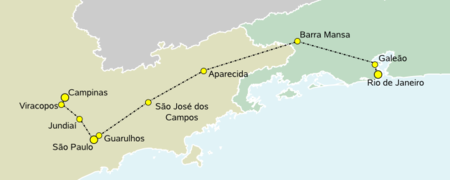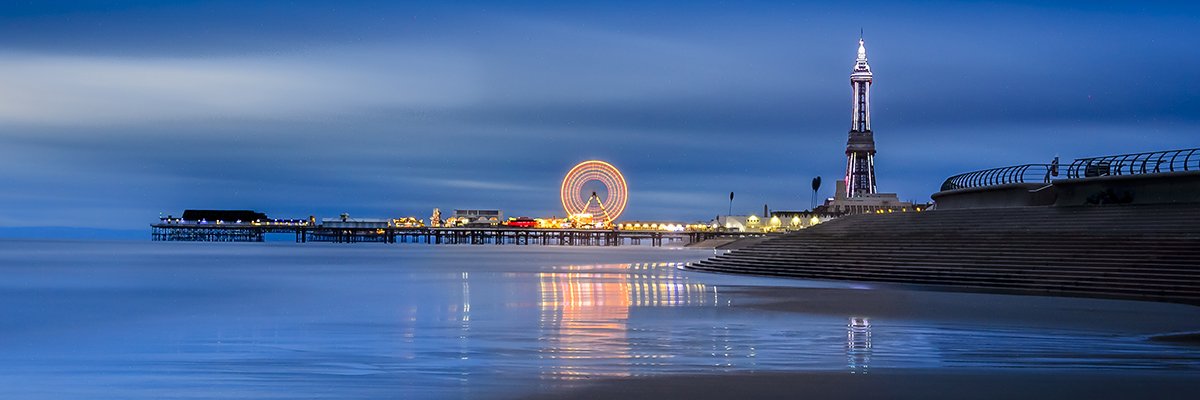If we see the list of countries with the most high-speed train lines, China is the one that cuts the cod, with Europe and Japan also at the crest of the wave. However, South America is a territory that neither punctures nor cuts. That is about to change and, although there are several projects in different countries, the first high-speed train in South America will be in Brazil.
And it promises to revolutionize transportation in one of the country’s key corridors.
It is not (fast) train territory. Connecting South America by train is extremely complicated. Not only do they have a complex topography with mountains and jungles to overcome, but also an enormous geographical dispersion, political instability in some countries and priorities that have changed with different governments.
Currently, the territory is experiencing a revolution. There are countries like Mexico or Chile that are waging war on their own with internal projects, but also a project known as ‘Bioceanic Railway Corridor’ that will link the Pacific and Atlantic and connect the port of Santos in Brazil with that of Bayóvar in Peru. Apart from that line, Brazil has its own plans.
The Brazilian TAV. The Brazilian high-speed project is not without controversy. The TAV (or High Speed Train) began to take shape in 2004. Named ‘Bandeirantes Express’, the idea was to connect São Paulo with Campinas. It came to nothing and was shelved in 2007, but with the arrival of Lula da Silva and the prospect of the 2014 World Cup, it was relaunched.
It would have been the perfect setting, but the dates were not met either and, from lost to the river: we took it to 2016 for the Rio Olympic Games. Spoiler: it went wrong due to financing problems, doubts about profitability and, evidently, a lack of interest from the private sector that was not clear about how to recover the investment.


Chronology. It would have been the first high-speed train in South America, but it seems that it had not said its last word, because in 2023, the private company TAV Brasil obtained authorization from the National Land Transport Agency to link the main cities of the country: Rio de Janeiro and Sao Paulo.
The 99-year concession allows them to plan, build and operate the line that, if all goes well, will connect the two cities with intermediate stops between Sao José dos Campos and Volta Redonda. The investment is not clear and is estimated at about 60,000 million reais, which is about 11,000 million euros, and points to a ticket Price of around 85 euros for a complete trip. TAV Brazil has announced the following schedule:
- End of 2026 for the conclusion of feasibility studies.
- 2027 as the start of construction.
- 2032 as commercial commissioning.
The train. The intention is for the machine to reach speeds of 320 km/h, which would more than meet what is considered the high speed standard (250 km/h) and will allow the 400 kilometers between the two megacities to be traveled in just one hour and forty-five minutes. This is a considerable reduction compared to a current road trip that takes about six hours.
Interests. The big question is who will build the system… and the trains. This is a high-stakes project and, as in other parts of the world, geopolitics plays an important role. Historically, the project has attracted the interest of companies such as the Spanish CAF or the French Alstom (right now in the running for the Belgian train), but also Siemens and other leading companies in the sector.
TAV Brazil has not closed its doors and is talking with both Spanish companies and Arab funds and, of course, with China, which is becoming a global touchstone in the railway segment. They are revolutionizing Africa, they have a presence in the deployment of the line that will cross South America from Brazil to Peru and getting a piece of the Brazilian high-speed pie would mean another lucrative hit on the table.
In any case, the one in Brazil and other projects seem to be beginning to shape the railway future of a Latin America that has had plans for decades, but for various reasons they have not come to fruition.
IMumegenes | Limongi, Danilo.mac, Mohamed Sy
In WorldOfSoftware | The US has been dreaming of its first high-speed train for decades: the California project is being a real nightmare












